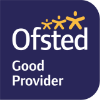Phonics
Intent
Our core aims for phonics are to ensure that all children:
-
Can recognise the 44 graphemes and phonemes in the English language.
-
Can segment and blend words
-
Can read a wide range or words and use phonetic knowledge when they encounter a new word.
-
Can use phonetic awareness to help them to segment words supporting their spelling and writing.
Implementation
We believe the following are key ingredients in phonics are:
There are six phases of phonics in line with the curriculum:
Phase 1: Activities are divided into seven aspects: Environmental sounds, Instrumental sounds, Body sounds, Rhythm and Rhyme, Alliteration and finally Oral blending and Segmenting
Phase 2: Learning 19 letters of the alphabet and one sound for each. Blending sounds together to make words. Segmenting sounds into separate sounds. Beginning to read simple captions
Phase 3: The remaining 7 letters of the alphabet, one sound for each. Graphemes such as “ch” “oo” and “th” representing the remaining phonemes not covered by single letters. Reading captions, sentences and questions. On completion of this phase, children will have learnt the simple code: one grapheme for each phoneme in the English language.
Phase 4: No new grapheme-phoneme correspondences are taught in this phase. Children learn to blend and segment longer words with adjacent sounds e.g. swim, clap, jump
Phase 5: Now we move on to the complex code. Children learn more graphemes for phonemes which they already know, plus different ways of pronouncing the graphemes they already know.
Phase 6: Working on spelling, including prefixes and suffixes, doubling and dropping letters.
What this looks like in practice:
- Nursery to year 2 receive 3-5 phonics lessons per week throughout the year.
-
Nursery focus on Phase 1 and 2.
-
Reception works on phase 2, 3, 4 and 5 with children working to be secure on phase 2 and 3 by the end of Reception.
-
Year 1 work on Phase 3, 4, and 5 working towards their phonics screener and being secure on phase 5 by the end of the year (some children may still be working on Phase 2).
-
Year 2 work on Phase 5 and 6, making sure to work with and support any children who did not pass the screener to reduce their phonetic gaps.
-
Each lesson looks at a new sound (phoneme) and the letter associated with the sound (grapheme.) Throughout the lesson children learn the phoneme/grapheme relationship, how to pronounce the sound, how to write the sound and how to apply the sound in both reading and writing a word that contains the sound.
-
We incorporate the jolly phonics movements into our lesson to help make learning the sounds fun and memorable for the children.
-
We incorporate talk for learning strategies such as talk partners, spot it and rally robin within our phonics lessons to support discussion on sounds and understanding.
-
In year 1 the children prepare for their phonics screening. They learn how to segment and blend a range of real and nonsense words to determine their phonics and reading ability.
-
For our older children and those that struggle with phonics a range of interventions are provided including; phonics groups, toe-by-toe, box dictation and the 5-minute box.
-
We work to make phonics a multi sensory experience through songs, videos, practice snd hands on activities to support our children learn their phonics especially our SEN students. In years Nursery -1 we also have phonics available in our continuous provision to support learning.
-
For our SEN children we often work in smaller groups and can take more time on particular sounds to help these become embedded through a range of hands-on and active practices.
Assessment
-
Children from Nursery-1 are assessed on their phonetic abilities using formative and summative practices. Teachers observe children during lessons to check understanding and phonetic ability. Children are tested each term on their knowledge of sounds learnt in a letters and sounds phonics assessment and in year 1 children also undertake practice phonics screenings throughout the year.
-
Children from year 2-6 who did not pass the phonics screening or struggle with phonics are assessed using letters and sounds assessments and past screeners to identify knowledge gaps.
-
Children from Reception to year 6 complete termly alphabet assessments to assess and support knowledge of the alphabet and sounds.
Schemes, programme and resources used to support phonics:
-
Active Learn – Bug Club Phonics
To find out more about this scheme and program, click on the link below:
ActiveLearn: Login (activelearnprimary.co.uk)
Impact:
The impact of our phonics curriculum is as follows:
-
Year 1 phonics screening results are in line with national.
-
Children are able to develop the skills needed to hear and identify sounds, blend and segment words and use this knowledge to develop their reading and writing skills.
SMSC in Phonics:Phonics is key to developing SMSC. At Sayes Court phonics is used to develop SMSC across the curriculum by helping give children the skills they need to decode and develop the skills they need to read. With a great phonetic ability children are able to enjoy a range of texts that develop their social, moral, spiritual and cultural identifies.





